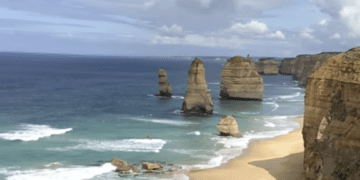The Lucknow Heritage Trail

Lucknow is home to the Bhool Bhulaiya or Maze. You will have to lose yourself in the amazing city if you really want to discover the real Lucknow. A cultural potboiler of food, music, art, and handicraft, Lucknow is a heritage city dating thousands of years ba. The city has become a mine of interesting facts during its journey from the Sultanate Era to the present decade through the British Raj. Apart from the sumptuous food, the architectural heritage of Lucknow is a reflection of the Mughal era and you find that Mughal touch in almost everything that relates to Lucknow. I set out to explore the city alone-The Lucknow Heritage Trail

1. Tonga Ride
The Bada Imambara was the first pitstop. I reached early and it was closed for the Friday prayers. While I was cooling my heels outside, a Tonga wala (horse cart driver) stopped and said that for Rs. 50 he would give me a ride around the Chowk, Rumi Darwaza, Chota Imambara and drop me back. A ride on a horse-driven carriage was too tempting and I hopped on. The Tongewala was well-informed and gave me a rundown on the history of the place.
2. The Rumi Darwaza


The Rumi Darwaza in Lucknow is an impressive and unique architectural marvel of India. Constructed in the year 1784 by Nawab Asaf-ud-doula, it is also known as the Turkish Gateway as it is identical in design to a similar gateway in ancient Constantinople. The gate looks different from both sides; an architectural wonder.
One side has three arches while the other has only one imposing arch. The height of the arch is a staggering 60 feet. The uppermost part of Rumi Darwaza comprises an octagonal Chatri (Umbrella) etched strikingly. It can be accessed by a staircase. The beautifully carved flowers and designs speak volumes about the exceptional style and eye for detail.
3. The Chowk
The Chowk is one of the oldest markets in North India. You can look around and see its rich cultural heritage. From Chikankari workshops to succulent kebabs, this Chowk is a pivotal point with the traders, engravers, painters, artisans, weavers, singers and nautch girls. The narrow streets are all hustle and bustle, loud, lively, colourful, and vibrant. It is like a flea market with permanent shops as well as footpath vendors. Genuine zardozi and chikankari, perfume or ittar made, handmade jewellery and home décor items are incredible.
4. Exquisite Chikankari


A genuine embroidery buff will realize the value of the delicate and utterly gorgeous exquisite creations of chikan available in the Chowk market. It is, the home of Chikan embroidery and they are created right in front of your eyes. The karigars or artists date back their family tree to the time of the Mughals. The art has been passed down generations. This embroidery art is special to Lucknow being the largest exporter of Chikan garments. The Mughal queen Noor Jahan reawakened this style in 655 A.D. You can enter the workshops and watch the entire process of block printing, design, embroidery making and finally tailoring. Take your pick of ladies, gents and kids’ kurtas, bed linen, placemats, and napkins.
The Lucknow Heritage Trail
5. Ghanta Ghar

The Tonga wallah waited patiently while I indulged in some retail therapy. Next, he took me to the Ghanta Ghar or Clock tower and Chota Imambara. The Husainabad Ghanta Ghar or Clock Tower is one of the tallest clock towers in India and was designed by Roskell Payne. Located opposite Chota Imambada and adjacent to the Rumi Darwaza, it is a fine example of English artistic brilliance. This clock tower is an imposing structure and it was built as a replica of the Big Ben of London.
Big Ben is a huge crowd puller but in India, our heritage sights are not valued as they are not preserved well. The Victorian Gothic clock tower is over 67 meters high with a huge pendulum at a length of 14 feet and the dial of the clock is designed in the shape of a 12-petalled flower with bells around it. The diameter of 2 feet and thickness of one and a half inches of the Clock makes it larger than even the Westminster Clock.
6. Bada Imambara





My guide cum Tonge wala pointed out the Naubat Khana and other minarets on the way back to the Bada Imambara . I thanked my vociferous guide and entered the Bara Imambara. It is very impressive and was built in the year 1784 by the fourth Nawab of Awadh known as Asaf-ud-Daula. The complex has four distinct structures – each a superb work of art. The Bara Imambara of Lucknow is one of the most famous monuments and it is also called Asafi Imambara after the name of the Nawab of Lucknow who got it constructed. It is an important place of worship for the Muslims who come here every year to celebrate the religious festival of Muharram.
The entrance is awesome and the verdant green courtyards are a sight for sore eyes. You have to remove your footwear and cover your head. The central hall or Prayer Hall of Bara Imambara is said to be the largest arched hall (50 meters long and going up to a height of 15 meters) in the world with the blocks put together with an interlocking system of Lakhauri bricks and there has been absolutely no use of girders and beams. The roof stands steady to date without any pillars to support it. Matchless style of construction I must say.
7. Shahi Bouli



The Shahi Bouli or Royal Well is 163 feet deep and an archaeological marvel. It has a stepwell and is eerie and dark inside. The Bouli is said to possess the treasure of king Nawab Asaf-ud-Dawlah which has never been found to this day. This Shahi Bouli was the first part to be built. It is constructed in such a manner that the water present in the well was connected to the river Gomti. The Britishers approached the Nawab as he possessed a lot of treasure: gold and silver and other precious ornaments. Afraid of it being ransacked, the Nawab stashed away all the treasure inside the monument, in a secret place which has not been found yet.
The map leading to the treasure and the keys of the treasure were thrown in this well of Shahi Bouli. The treasure keeper of that time, Mool Chand Rastogi, jumped into the well and committed suicide so that the treasure could not be looted by the British. One can see anyone entering the Bouli. From the outside, one cannot see anyone or anything inside but from deep inside the main entrance can be seen in the water below. The reflection is crystal clear and for the soldiers, guarding the treasure it might have worked like CCTV footage in those times.
8. The Bhoolbhulaiya

The Bara Imambara is also known for its incredible maze called Bhulbhulaiya. Or labyrinth. This is located on the upper floor of the monument. There is a climb of more than 80 steps to reach the maze. It has more than 1,000 passages and about 489 doorways that are alike. If you take a guide, he lets you guess which of the four doorways is the right door. The guide asks you to repeat – “Chaar raaste bhoot, ek rasste sach, teen raaste bhool-bhulaiya.” The labyrinth is full of wonders at every turn. The scenic panorama of the city from the top of this monument is absolutely breathtaking.At the gate, there are a couple of souvenir shops selling life-like filigree bone carvings with motifs of flowers, leaves, birds and animals on items like knives, jewellery boxes, shirt pins and other baubles.
9. The British Residency






The British Residency in Lucknow is a must-see. An imposing monument of unmatched splendour, the British Residency in Lucknow was built by the erstwhile Nawab of Awadh, Saadat Ali Khan, in the year 1800 AD. It was designed as a group of buildings that served as the residence of the British Resident General. He was also the East India Company’s representative in the Nawab’s court. The residency rests on the banks of the river Gomti, encompassed by fertile flowerbeds and neatly kept lawns. Walk around to get a feel of that historic era.
Today, only the bricks and few pillars of the residency stand in mute testimony to the violence of the past. Unfortunately, a major part of the structure was damaged by cannon fire during the siege and now stands in ruins. What remains of the residency has been thoughtfully declared a protected monument by the Archaeological Survey of India and converted into a museum. Several government offices function from here. The British Residency was the place that served as a refuge for approximately 3000 British inhabitants during the time of the uprising of 1857. The Residency still has within its walls, the graves of around 2000 British soldiers who died in the Revolt of 1857.
10. A heart-wrenching Incident

This is not about a heritage site but about a heart-wrenching incident. While walking around the chowk, a rickshaw man requested me to check out chikan garments at a store. I had already shopped but he imploringly said he would get a kilo of rice from that store if he took me there. I went to the store and picked up a kurta so that he could get the rice and his family could get one free meal. Such incidents are disturbing and don’t know when the world will be a better place to live.
Lucknow has scorching summers and extremely chilly winters so the best time to visit is between the months of October to March.
These are only a small number of places that I have shared. Heritage Lucknow has numerous places of interest. It is not just heritage buildings but heritage Awadhi cuisine as well. Watch out for a food walk next.
Mehmaan nawaazi ke liye shukriya Lucknow. Fir Milenge..
I am participating in #BlogchatterA2Z by @ Blogchatter 2022
If you haven’t checked out my theme for A2Z 2022, then do check it out here.
My A post is Ambrosial Pineapple Cream Pudding. B post is Strawberry Biscuit Pudding. C is Chana Dal or tadka Dal, D for Thandai Drink, E for How to eat a juicy Mango, F for Frittata, G for Godh Bharai, H for Homemade Kulfi, I for Mango Icecream, J for watermelon Juice, K for Matar Kulcha, L for Lazy summer days, M for Munjalu, Palm fruit or Ice Apple, N for Natural Munjalu or Ice Apple Sherbet, O for Offbeat Destination Bhopal, P for Shoppers Paradise-Dilli Haat, Q for 10 Quintessential ways to get cooking without sweating, R for Ram Ladoo, S for Sustainable Travel













Wow..i really want to walk in this heritage trail. Thanks for the virtual tour of the heritage city
I love visiting Lucknow, not only because I have family there, but the people are kind and courteous, a marked departure from bigger cities. Did you see the passage in Bhool Bhulaiya which apparently is the secret way to Delhi?
Interesting trail with beautiful pictures.
I had visited Lucknow but it was always for work and I have never completely got the time to immerse myself completely in the city and its vibe. Maybe next time.